All about Venus Flytrap dormancy
Venus Flytraps will go dormant based on the following triggers: cold temperatures, cooler nights in the 40’s and low 50’s, and a shortening photoperiod. The plants can sense that the months are shortening, even if the plant is warm all the time. It can still go dormant solely via a shortened photoperiod even without experiencing cooler temps.
Mature plants must go dormant each year in order to survive after they’re about 1-2 years old. Otherwise, they will die within a year or two. Plants purchased in the late fall must go dormant in order to survive. Winter plants have just emerged from tissue culture, so they will not need to experience dormancy until the following year.
Venus flytraps grown indoors will not shed their leaves: light dormancy will be enough for them. If your plants are being grown outdoors, they will shed leaves quite a bit — all the way down to the growth point and their most recent leaves, especially if they’re experiencing lots of frost. Venus flytraps can survive up to 3 days in completely frozen outdoor conditions, between 10-19F. They cannot survive lower than these temperatures and can only do so for short spells. Plants undergoing these extreme temperature drops must be dormant plants. Actively growing plants that experience frost will immediately be killed.
Plants that have experienced light dormancy or have been grown outside haven’t experienced extremely cold weather yet. The way that you can tell is that the trap buds cluster close to the center of the plant instead of unfurling. Dormancy can last about 3 months, although plants are capable of staying dormant for longer, but don’t require it. Places like Hawaii, South Florida, New Orleans – do not require hard dormancy. Photoperiod dormancy outdoors is all the plant needs. Venus flytraps can stay dormant for longer: up to 5 months, but they will not grow as large the following year. Long dormancy periods will slow down a plant’s growth.
Indoor plants will NOT go into hard dormancy.
In the fall, the rhizome will swell with resources that the plant is saving for spring. It will stay swollen in the middle of dormancy. New leaves and traps will be smaller than normal. These traps won’t be able to trap insects.
Native climate in the Carolinas: plants will go dormant in November. If there’s a frost, it will trigger dormancy. If no frost occurs, they will continue growing until early December. They stay dormant until early March or the beginning of April. If any frosts occur during this time, dormancy will continue until April. Otherwise, it will end early March.
After Venus flytraps have been dormant for awhile, as long as it’s not too cold, (no hard frosts), they will start making new traps. They will continue growing, even while dormant. Even during frosts – toward the end of a frost, plants will begin growing new traps and buds. If they can sense that the cold will be over soon, the traps will unfurl more quickly and won’t cluster together.
Plant care during dormancy:
Care for them the same way, except you don’t need to feed them because the traps cannot digest food or close shut. They still need to be watered the same way via the tray method. Because temps are cooler, they may not need as frequent watering. Water from below — never above. Always water the sitting pot. Plants should still receive strong light during the winter time, and they can still die from light deprivation.
With refrigerator dormancy, the plant goes into a hard dormancy. A windowsill setup still requires some degree of sunlight. Plants will still continue to photosynthesize throughout the winter. Photosynthesis builds up carbohydrates for the plant, which are then stored in the rhizome. Light in winter will equate to the plant growing faster in spring and summer of the next year.
Repotting the plant during dormancy:
There isn’t really a good time of the year to repot a plant. It is probably best done in February because it doesn’t yet have deeper roots. You can repot during dormancy if you want to.
When the plant comes out of dormancy, it will unfurl trap buds that have been clustered together, and it will suddenly start making larger traps and rapidly grow heart shaped prostrate leaves lying flat on the ground. Traps open upward. If the plant is large and mature enough, it will make a flower stalk when it comes out of dormancy. Sometimes the flower stalk will come out before the trap buds unfurl. There’s no consistent pattern which comes first. If you want to keep the flower for seed germination, it needs to be hand-pollinated. A single plant has both female and male flowers. Bugs that pollinate Venus flytraps only live in the Southeast USA. When the female part of the flower is ripe, it’s only ripe for a few days.
After the flower stalk is past that stage and ripe, the plant will shoot up vertical leaves in May or June. The best thing to do is to pinch the buds at the tip and leave the stalk intact. This way, the stalk will not grow upwards any further. When the flower stalk recedes later on in the middle of summer, it will cause a boost of growth. When you cut off a stalk, the plant’s resources are removed since the stalk still photosynthesizes — not as efficiently as a leaf does, but it still does it. Cut stalks grow mold and can spread to the growth plant and can kill the plant.
There are no benefits of a hard dormancy. There is also no point in trying to make the plant colder. As long as the photoperiod has shortened, that’s enough for the plant to fulfill its dormancy requirement. Light deprivation will kill plants within 1-2 weeks without coolness.
What to do w/ artificial lighting setups: switch from 12-14 hrs per day to 8 hrs per day, will trigger dormancy. Don’t move the plant or switch the light type.
Once spring traps emerge, they can be fed.
Share this post
Leave a Reply
You must be logged in to post a comment.

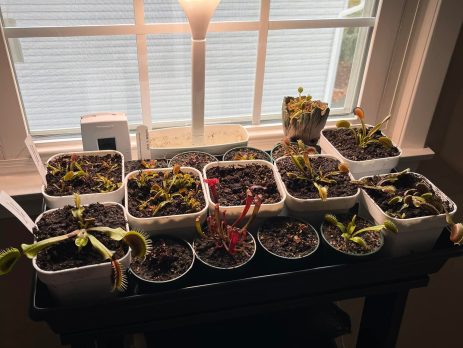


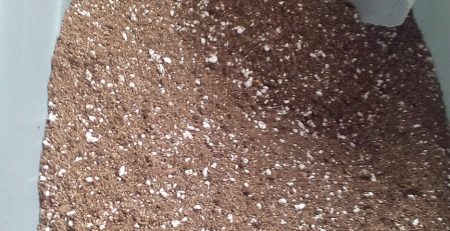
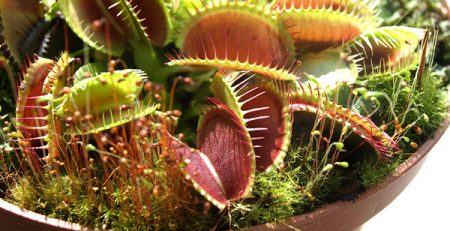
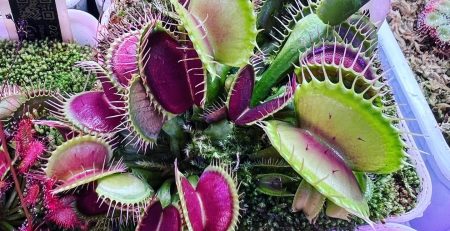
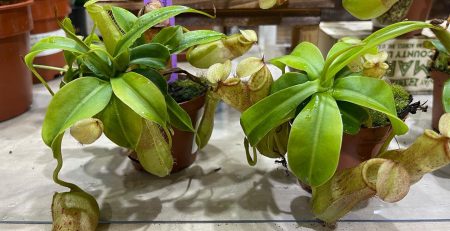
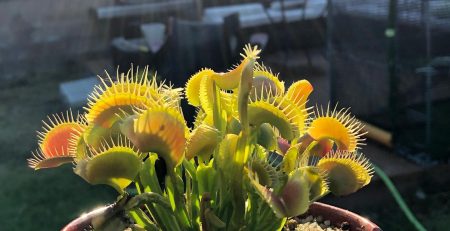
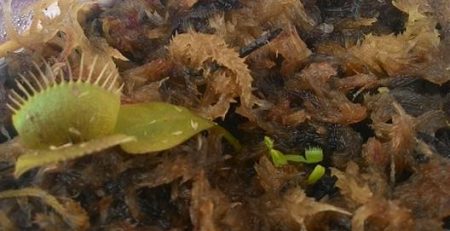
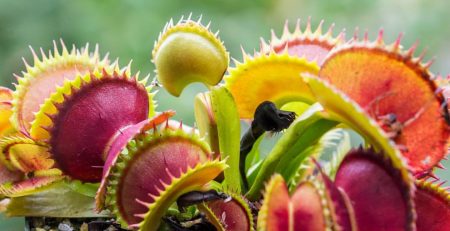
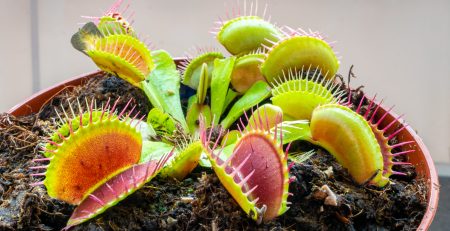
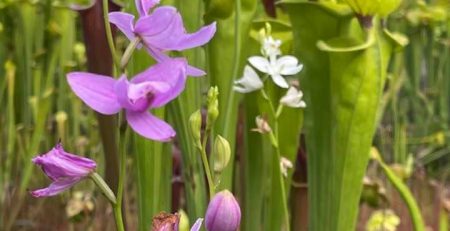
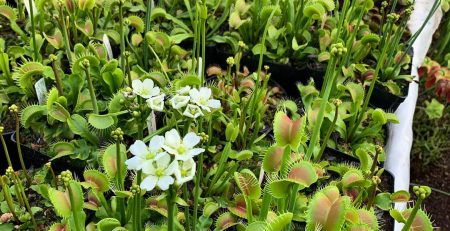
Comments (4)
[…] mild, or move them indoors, to a cool and dark place, such as a basement, garage, or refrigerator. The ideal temperature for dormancy is between 35°F and 50°F. The dormancy period can last from 3 t…, depending on the variety and the conditions. During dormancy, you should water the plants […]
My Venus Flytrap produced flowers and seeds which sprouted in June/July. I now have small, but very healthy looking young plants with around 4-7 traps about 1-2mm long. I live in SC and my dormancy period plan is to place my mature plants outside and protect from deep frost. Should I do something different for my very young/small plants?
We live in Minnesota. Our venus flytrap sits in the kitchen window. Should we do anything for her to be dormant? Put her into a bag and into the refrigerator? Just leave her in the window and water her? Are there certain types of pots that are best to replant her in?
This is a loved plant of my 9 year old and we would like her to stay alive. Thanks for your help.
Amy
Leave the plant on your windowsill and keep its tray watered — there’s nothing else to do. No repotting is necessary. In fact, our mesh pots that are included with our plants are the best.